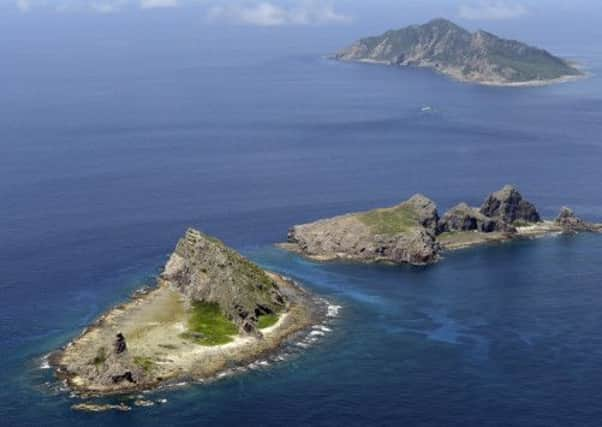China lays down law on islands’ airspace


China’s government-run Xinhua news agency published coordinates for a newly established “East China Sea Air Defence Identification Zone”, which covers most of that sea and includes the skies over the disputed islands.
Beijing warned that it would take “defensive emergency measures” against aircraft that failed to identify themselves properly in the airspace.
Advertisement
Hide AdAdvertisement
Hide AdJapanese foreign minister Fumio Kishida said the move was unacceptable. “It could well lead to an unforeseen situation,” he told reporters yesterday.
Ties between the Asian powers have been strained for months by the dispute over the islands in the East China Sea, called the Diaoyu by China and the Senkaku by Japan. The islands are currently under Japanese administrative control.
The announcement suggests that foreign aircraft merely passing through that zone would have to follow China’s procedures – or face unknown, potentially dangerous consequences.
US secretary of state John Kerry urged China to exercise restraint, saying freedom of overflight was essential to stability and security in the Pacific.
“We urge China not to implement its threat to take action against aircraft that do not identify themselves or obey orders from Beijing,” he said.
A US-Japan security treaty commits Washington to intervene in defence of Japan if there is an attack on Japanese-administered territory. The US has a hefty military presence in Japan, including on the southern island of Okinawa, which is close to the disputed isles.
Xinhua said in a commentary the “air zone could contribute to regional peace and security by curbing the increasing rampancy of Japan’s right-wing forces, as well as the continuous and dangerous provocations of Japanese politicians”.
Tensions flared last year when the government bought three of the islands from a private landowner to fend off a potentially more inflammatory purchase by the Tokyo metropolitan government, at the time headed by nationalist governor Shintaro Ishihara.
Advertisement
Hide AdAdvertisement
Hide AdTokyo lodged a strong protest through the Chinese embassy, calling the action “totally unacceptable” and warning that the overlap of the air defence identification zone could lead to an “unexpected occurrence of accidents in the airspace”.
A senior diplomat in China’s Tokyo embassy, Han Zhiqiang, dismissed Tokyo’s protests, saying that “Japan has no right to make irresponsible remarks”.
Mr Han said the Chinese government’s aim was to defend its national sovereignty and territorial airspace and was not aimed at a specific country or target.
Xinhua said the latest rules came into force on Saturday and China’s air force conducted its first patrol over the zone. The patrol included early warning aircraft and fighters, it said.
Japan, for its part, scrambled fighter jets on Saturday afternoon against two Chinese reconnaissance planes over the East China Sea, the Japanese defence ministry said.
US defence secretary Chuck Hagel called Beijing’s move a “destabilising attempt to alter the status quo in the region”.
“This unilateral action increases the risk of misunderstanding and miscalculations,” he said.